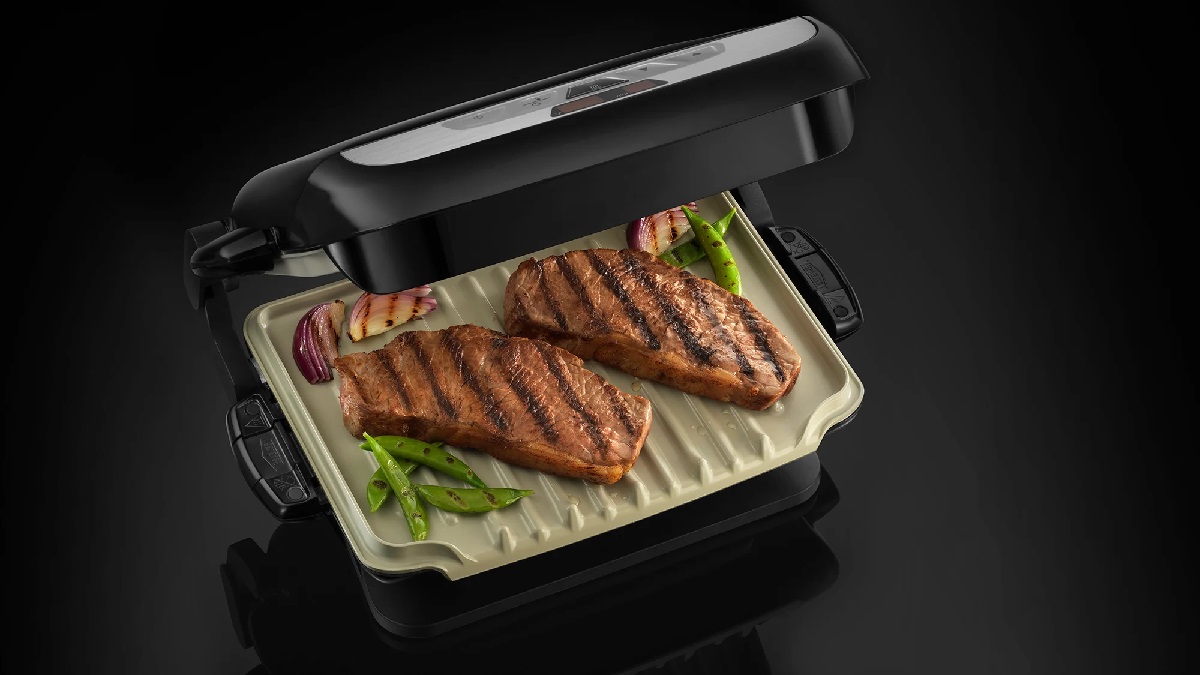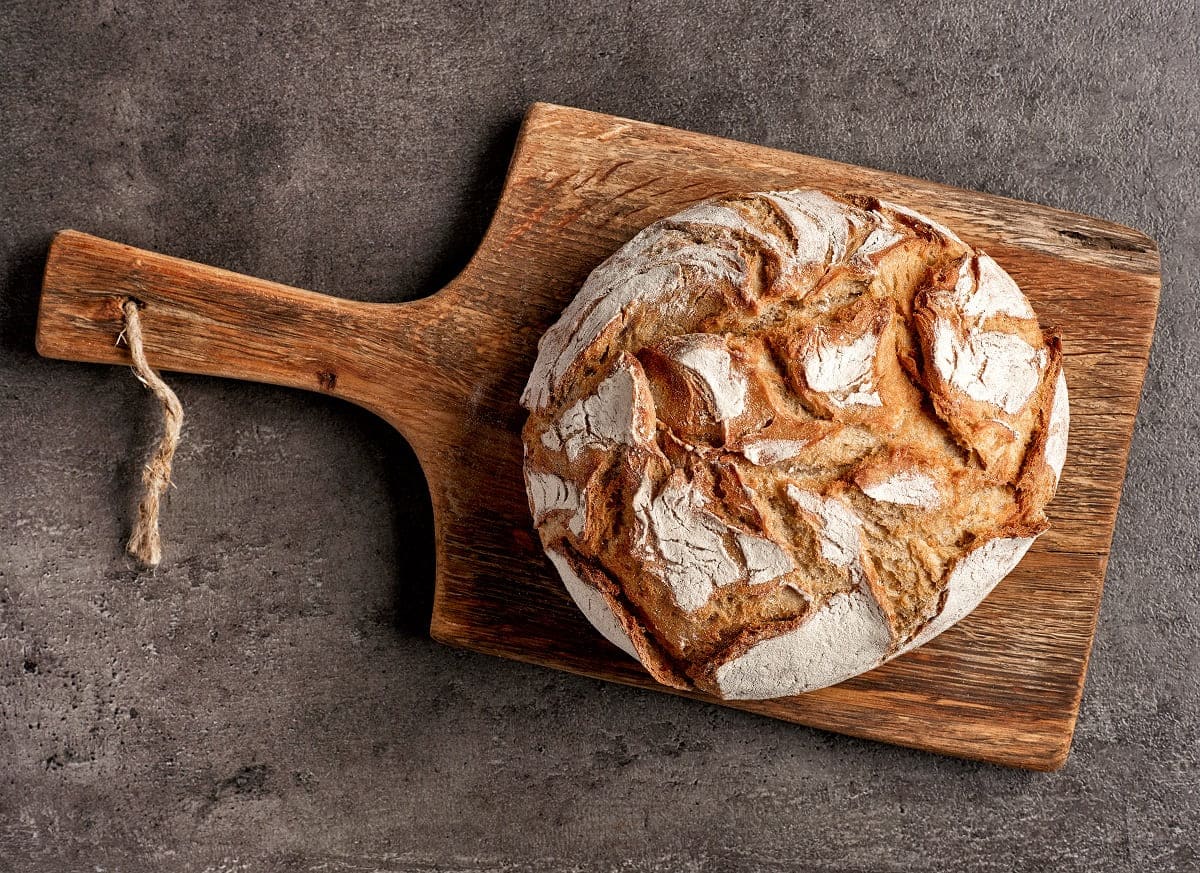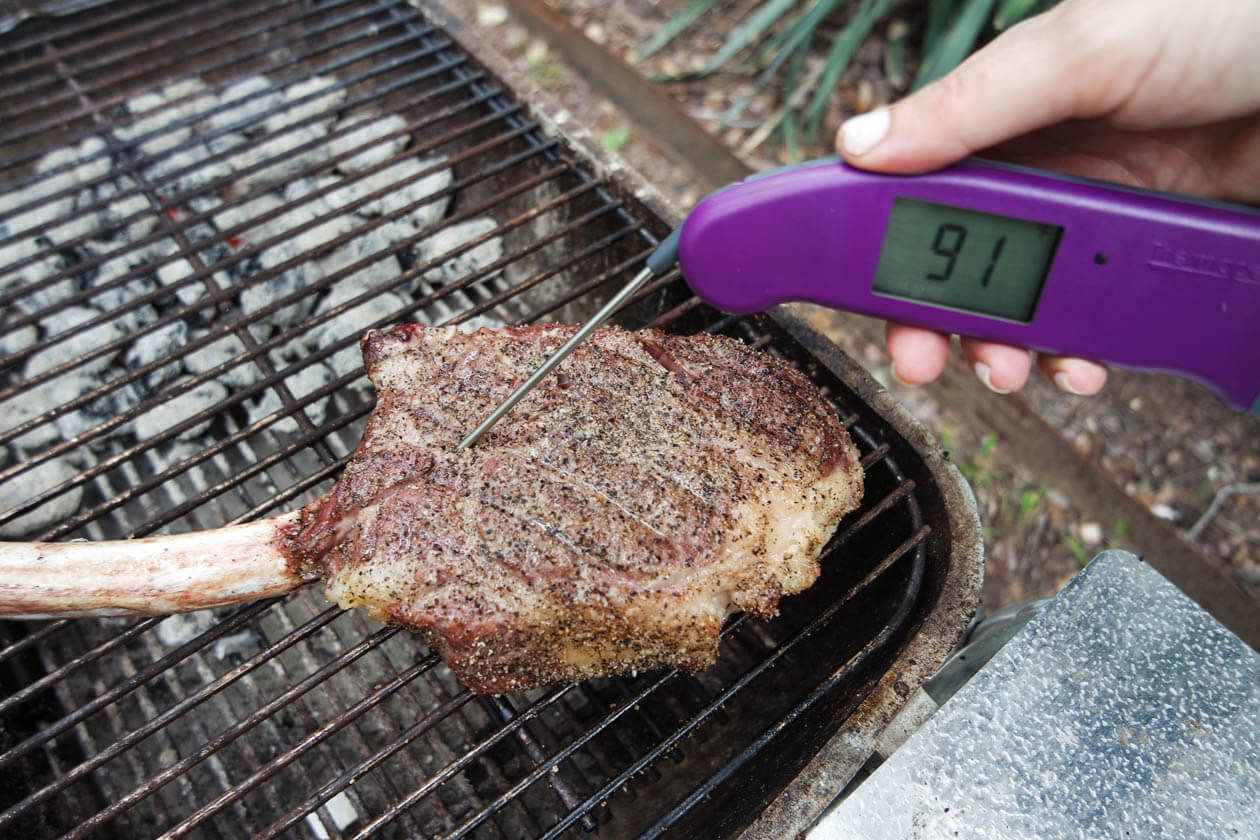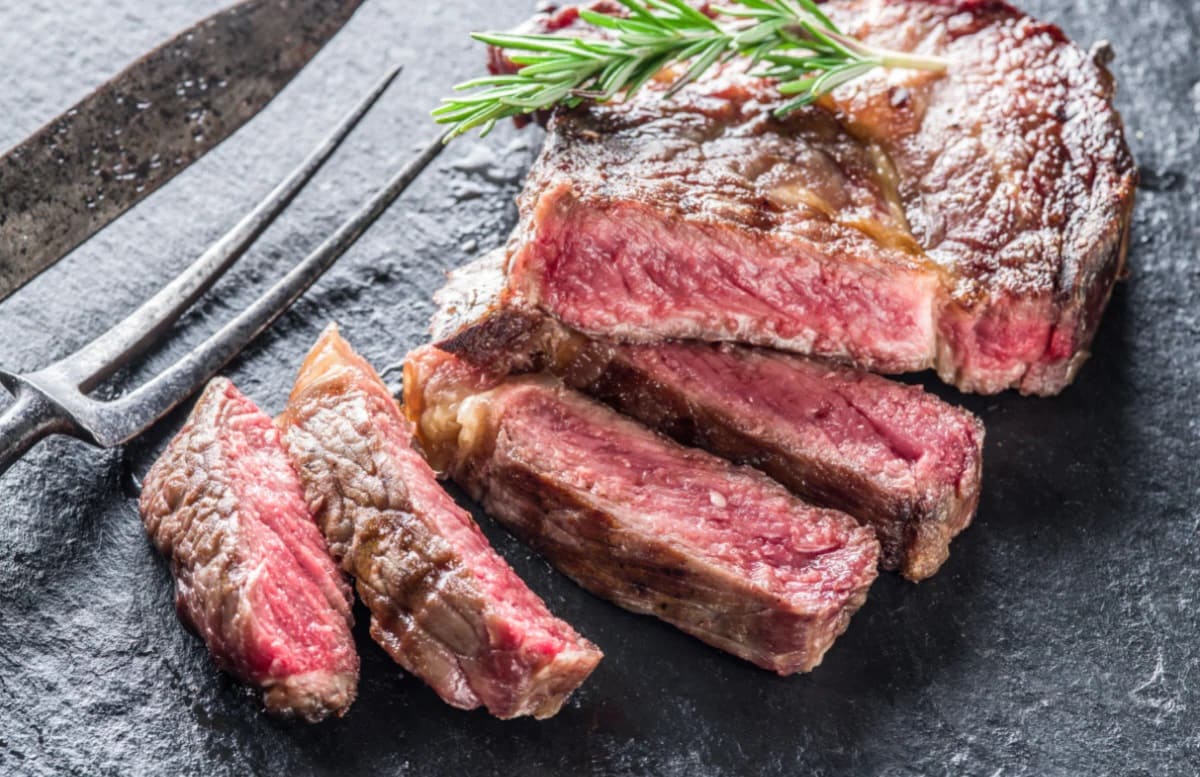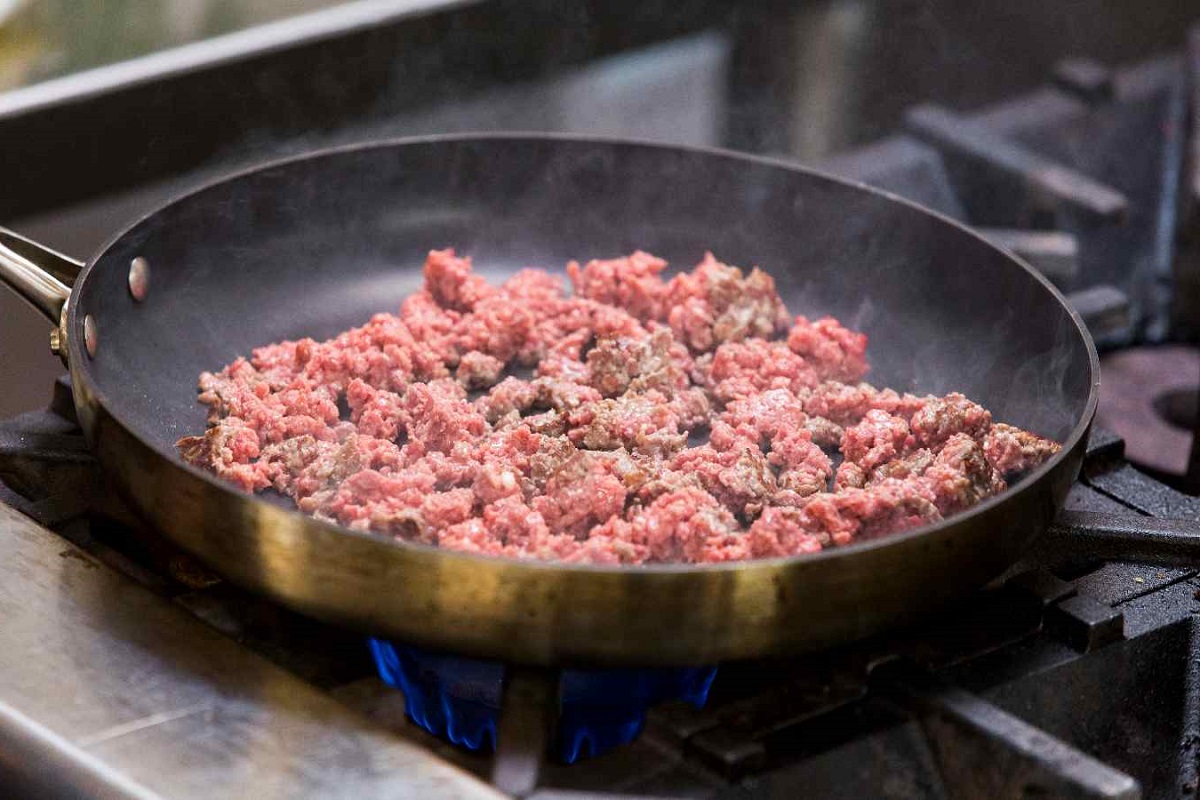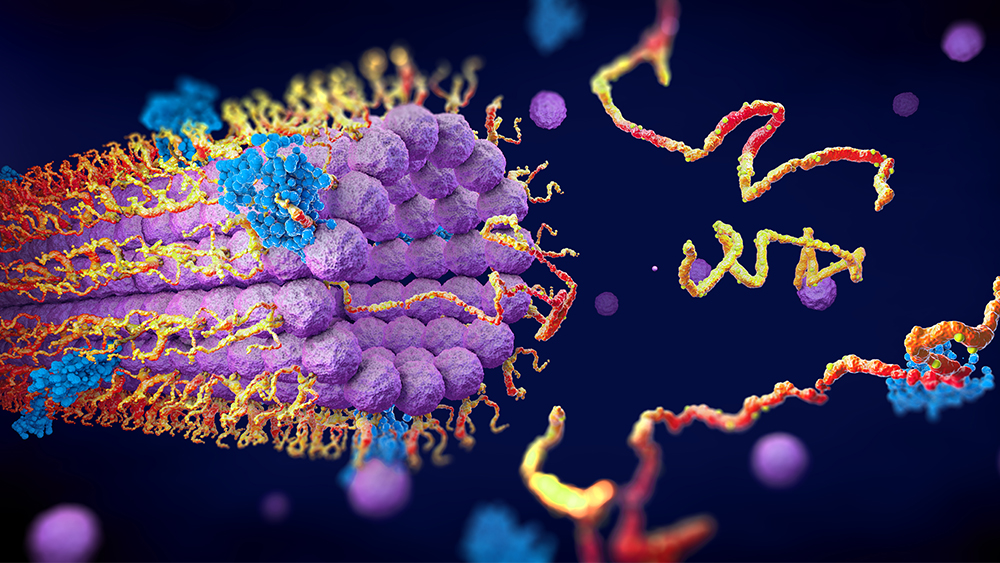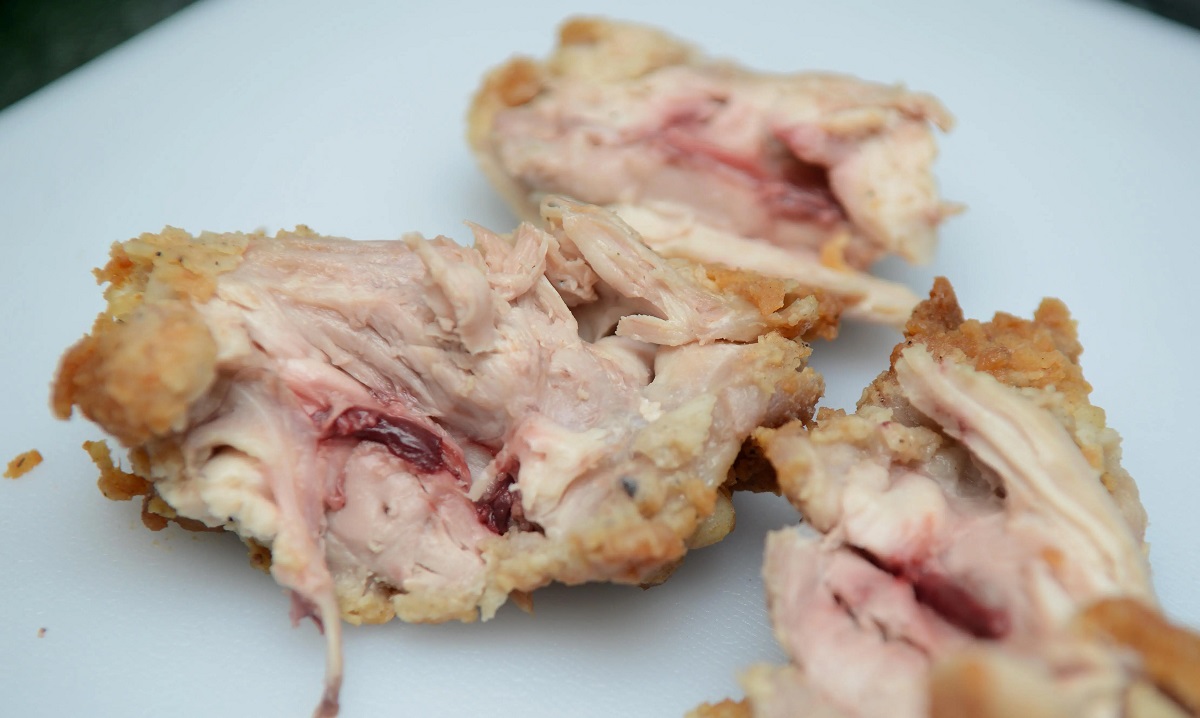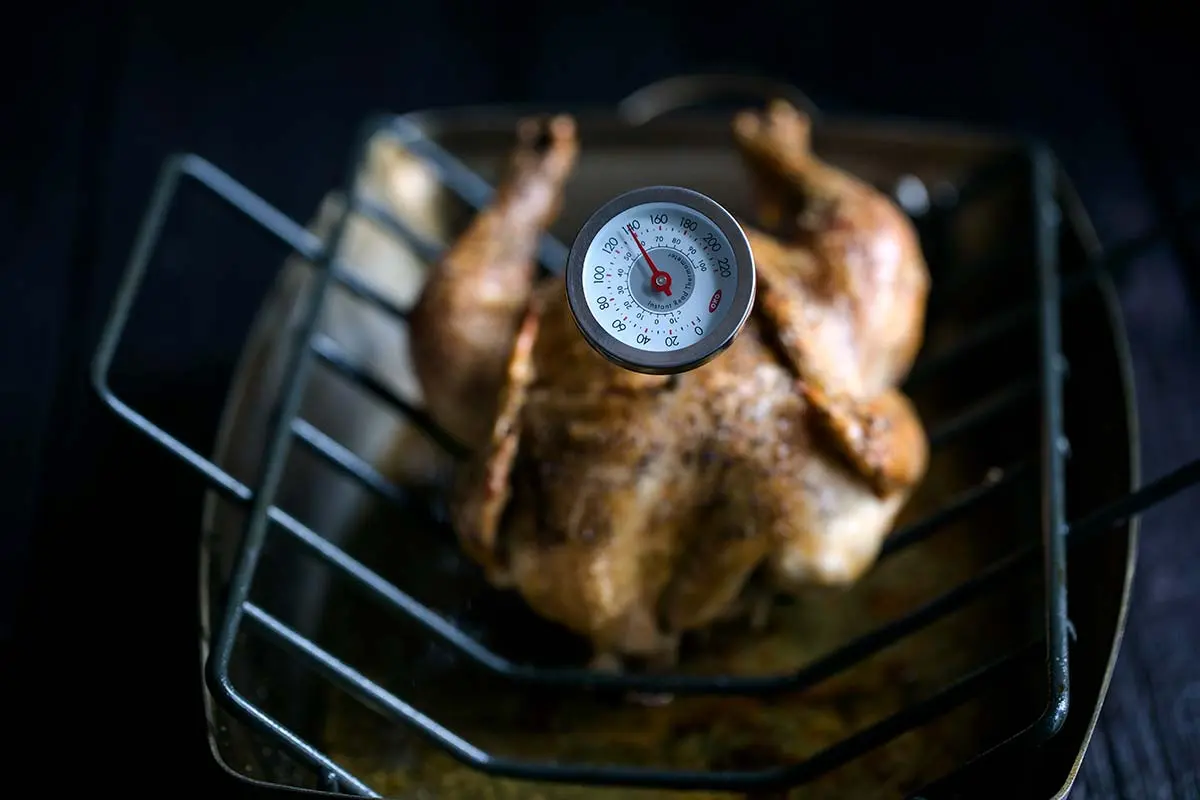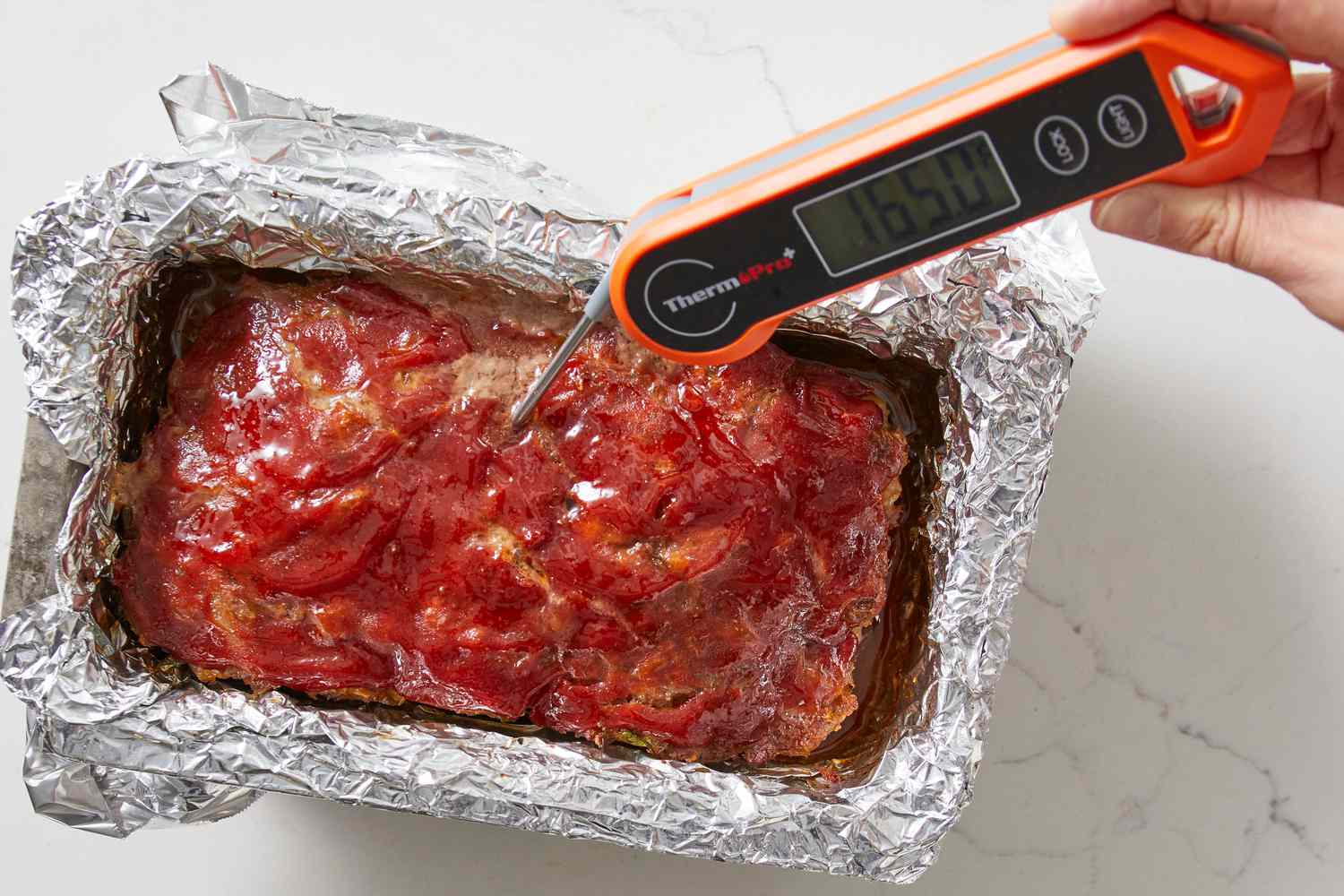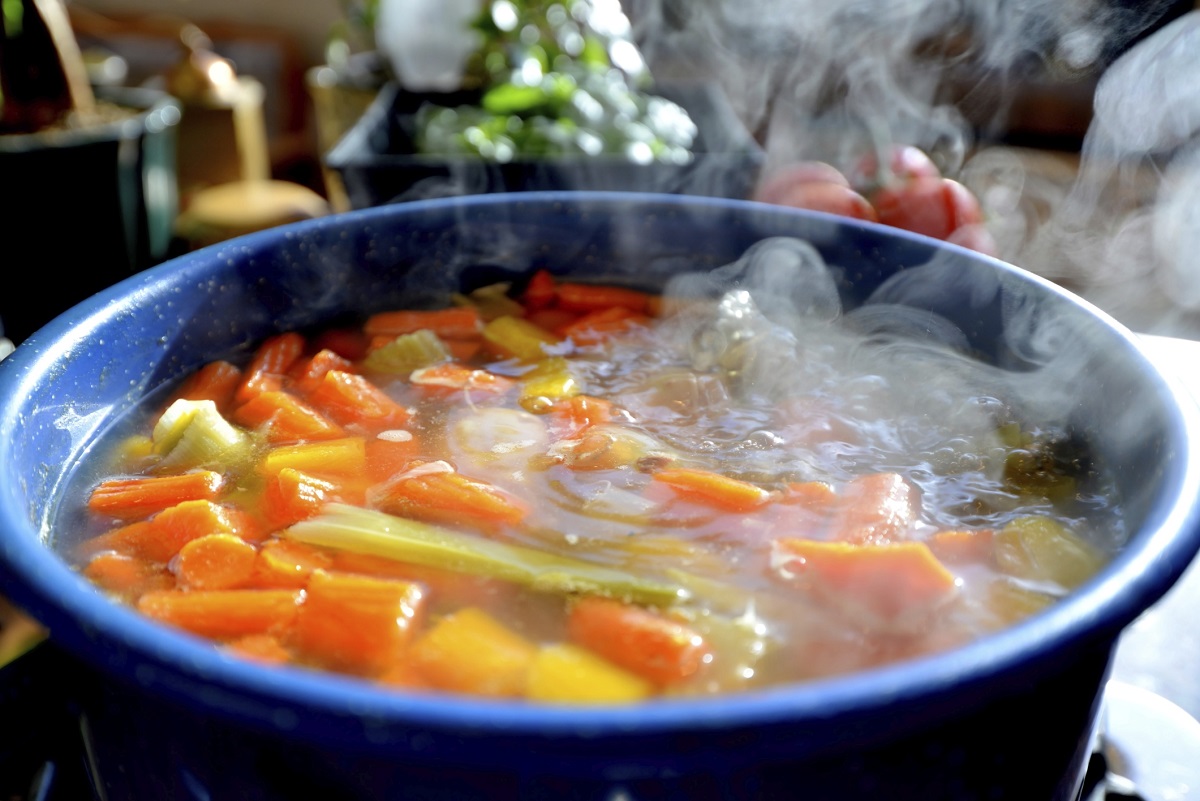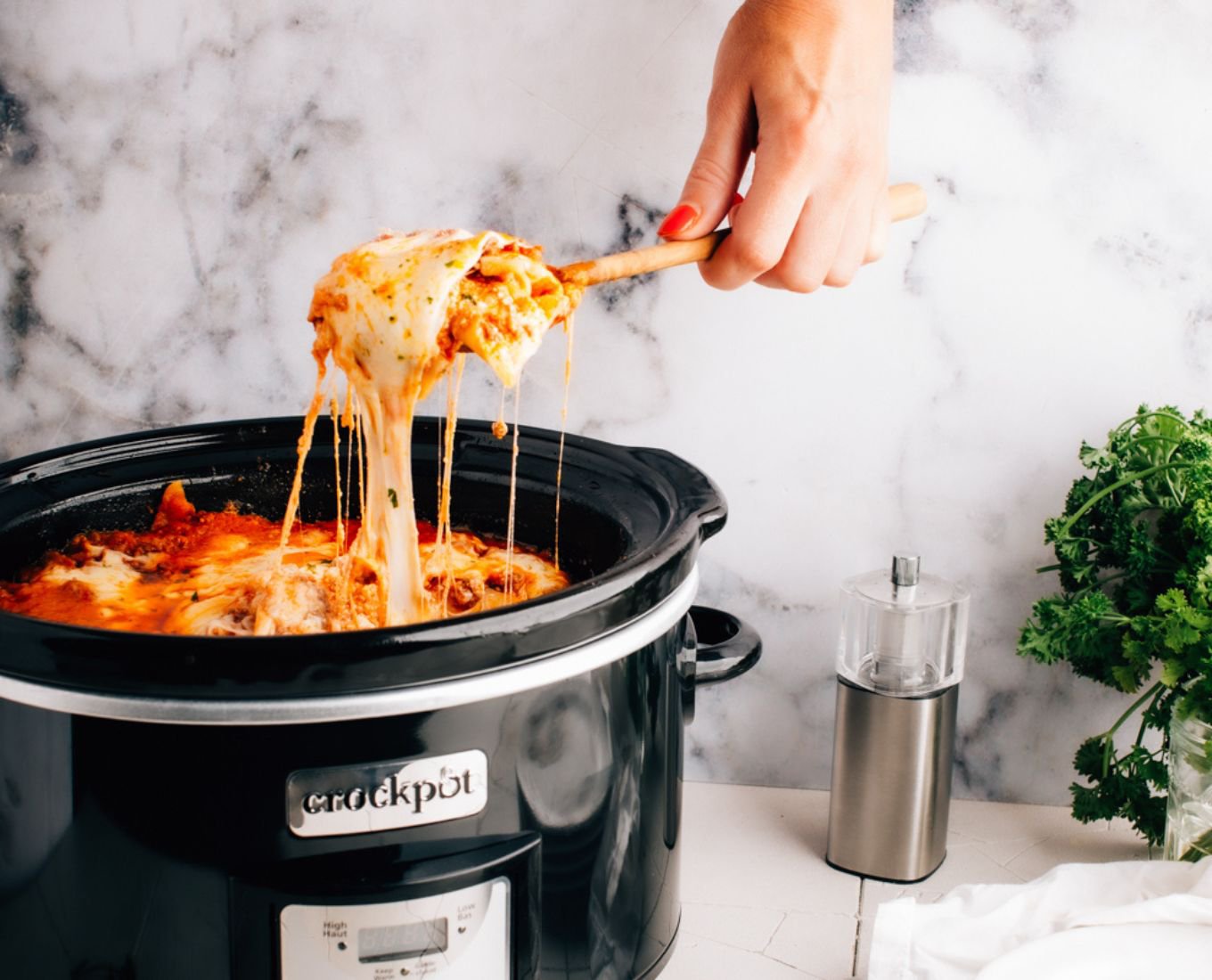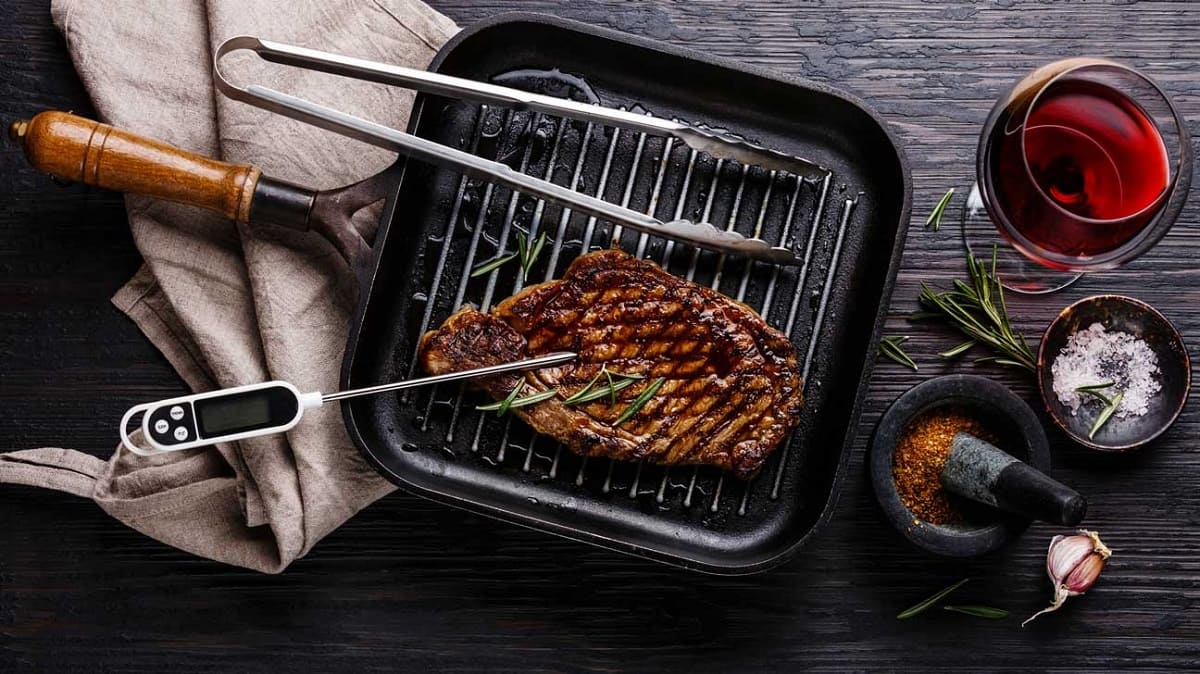Home>Culinary & Beverages>Optimal Temperature Guide For Grilling Chicken
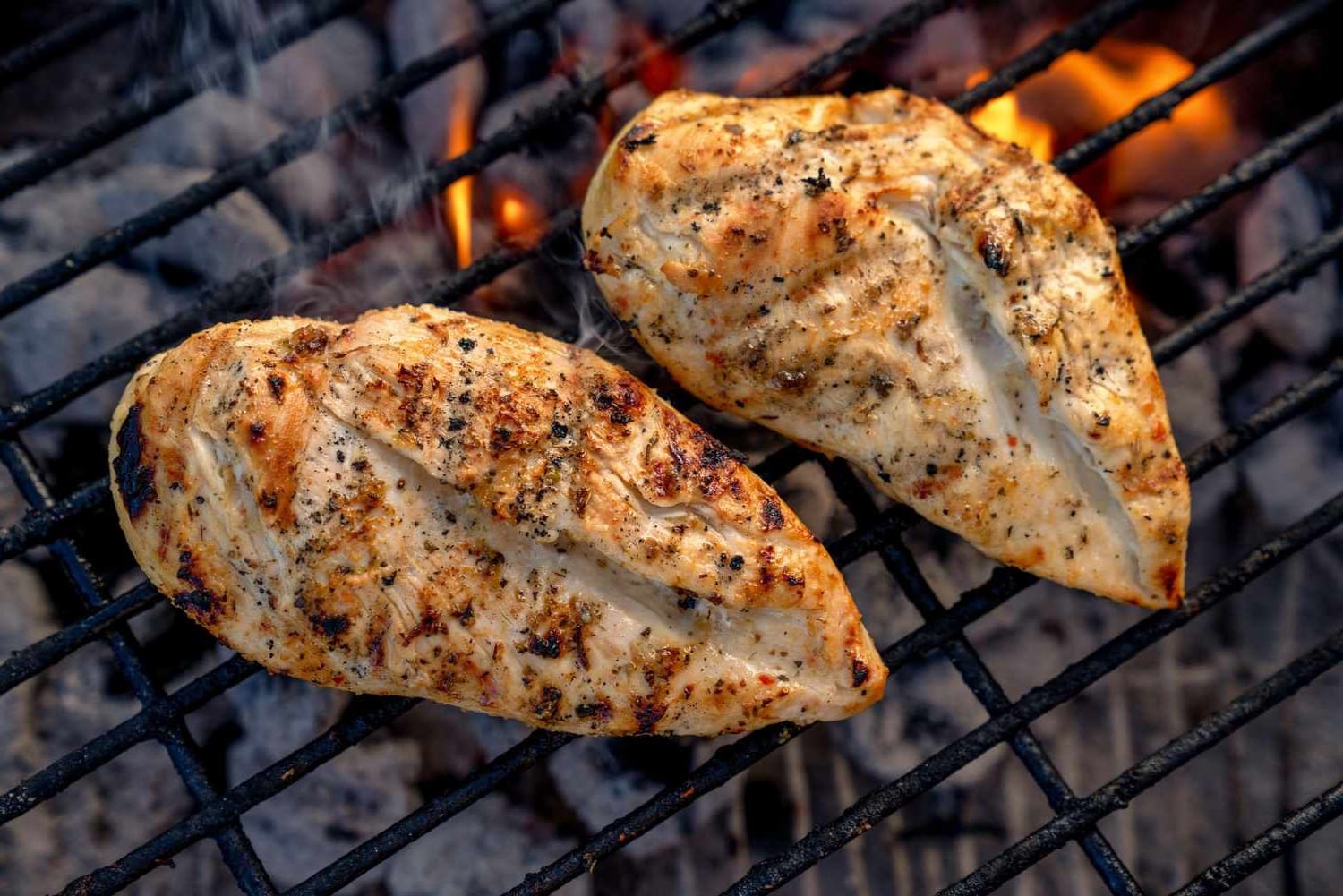

Culinary & Beverages
Optimal Temperature Guide For Grilling Chicken
Published: February 22, 2024
Discover the perfect temperature for grilling chicken with our comprehensive culinary guide. Elevate your BBQ game with expert tips and techniques. Ideal for culinary and beverage enthusiasts.
(Many of the links in this article redirect to a specific reviewed product. Your purchase of these products through affiliate links helps to generate commission for Temperatures.com, at no extra cost. Learn more)
Table of Contents
Introduction
Grilling chicken is a beloved culinary tradition that brings people together over sizzling flames and tantalizing aromas. Whether it's a casual backyard barbecue, a festive gathering, or a simple weeknight meal, the allure of perfectly grilled chicken is undeniable. However, achieving that succulent, flavorful result hinges on understanding the optimal grilling temperature for chicken.
Grilling enthusiasts and culinary novices alike often grapple with the question of the ideal temperature for grilling chicken. This fundamental query forms the crux of the grilling process, as the temperature directly impacts the chicken's texture, juiciness, and overall taste. Therefore, delving into the nuances of grilling temperature is essential for mastering the art of preparing delectable grilled chicken.
In this comprehensive guide, we will explore the multifaceted realm of grilling temperature for chicken, shedding light on the factors that influence it, the recommended internal temperature for safe consumption, and invaluable tips for maintaining optimal grilling conditions. Additionally, we will delve into various grilling techniques that cater to different preferences and culinary styles, empowering you to elevate your grilling prowess and delight your taste buds with perfectly grilled chicken.
Embark on this flavorful journey as we unravel the secrets of achieving the perfect grilling temperature for chicken, unlocking a world of culinary delight and gastronomic satisfaction.
Factors Affecting Grilling Temperature
The optimal grilling temperature for chicken is influenced by a myriad of factors that collectively shape the outcome of this culinary endeavor. Understanding these factors is pivotal in achieving the desired texture, juiciness, and flavor of grilled chicken. Let's delve into the key elements that impact grilling temperature:
-
Chicken Cut and Thickness: The cut and thickness of the chicken pieces significantly affect the grilling temperature. Thicker cuts require lower and slower heat to ensure that the chicken cooks evenly without charring the exterior.
-
Bone-In vs. Boneless Chicken: Whether the chicken is bone-in or boneless plays a crucial role in determining the grilling temperature. Bone-in chicken generally requires a longer cooking time at a lower temperature to ensure that the meat near the bone is thoroughly cooked without burning the exterior.
-
Marinades and Seasonings: The composition of the marinade or seasoning used on the chicken can impact the grilling temperature. Sugary or acidic marinades may caramelize or burn at high temperatures, necessitating a lower grilling temperature to prevent charring.
-
Grill Type and Fuel: The type of grill and fuel used, such as charcoal, gas, or wood pellets, can influence the grilling temperature. Each fuel source has its unique heat distribution and intensity, requiring adjustments to achieve the optimal temperature for grilling chicken.
-
Outdoor Weather Conditions: External weather conditions, including ambient temperature, humidity, and wind, can affect the grilling temperature. Windy conditions may necessitate higher temperatures to maintain consistent heat, while hot and humid weather may impact the grill's performance.
-
Grill Lid Open or Closed: Whether the grill lid is open or closed affects the grilling temperature. Closing the lid traps heat and creates a convection effect, allowing the chicken to cook more evenly at a lower temperature.
Understanding these factors empowers grill enthusiasts to adapt and optimize the grilling temperature based on the specific characteristics of the chicken, the grilling environment, and individual preferences. By considering these influential elements, one can navigate the complexities of grilling temperature with finesse, ultimately yielding delectably grilled chicken that captivates the palate with every savory bite.
Recommended Internal Temperature for Grilled Chicken
Achieving the optimal internal temperature is paramount when grilling chicken to ensure both safety and palatability. The United States Department of Agriculture (USDA) recommends that all poultry, including chicken, reach a minimum internal temperature of 165°F (74°C) to destroy harmful bacteria, such as salmonella, and guarantee safe consumption. This temperature threshold applies to various cuts of chicken, including breasts, thighs, wings, and drumsticks.
When using a meat thermometer to gauge the internal temperature of grilled chicken, it is crucial to insert the probe into the thickest part of the meat without touching the bone, if present. This ensures an accurate reading of the chicken's internal temperature, providing confidence in its doneness and safety for consumption.
While adhering to the USDA's recommended minimum internal temperature is essential for food safety, some culinary enthusiasts may prefer a slightly higher internal temperature for specific cuts of chicken. For instance, chicken breasts, known for their lean and tender nature, can benefit from being grilled to an internal temperature of 170°F (77°C) to 175°F (79°C) to achieve optimal juiciness and tenderness. Conversely, dark meat cuts, such as thighs and drumsticks, can be grilled to the USDA's recommended minimum temperature of 165°F (74°C) while allowing the meat to retain its succulent texture and rich flavor.
By understanding and adhering to the recommended internal temperatures for grilled chicken, individuals can savor the culinary delight of perfectly cooked poultry while prioritizing food safety. This knowledge empowers grill enthusiasts to navigate the grilling process with confidence, ensuring that each mouthwatering bite of grilled chicken delivers both delectable flavors and peace of mind.
Tips for Maintaining Optimal Grilling Temperature
Maintaining optimal grilling temperature is a pivotal aspect of achieving perfectly grilled chicken that is juicy, flavorful, and safely consumable. To elevate your grilling prowess and ensure culinary success, consider the following tips for maintaining the ideal grilling temperature:
-
Preheat the Grill: Before placing the chicken on the grill, ensure that it is preheated to the desired temperature. Preheating allows the grill grates to reach the optimal heat level, promoting even cooking and preventing the chicken from sticking to the grates.
-
Zone Grilling: Create different heat zones on the grill by arranging the charcoal or adjusting the gas burners. This technique provides flexibility in managing the grilling temperature, allowing you to sear the chicken over high heat and then transfer it to a cooler zone to finish cooking without scorching the exterior.
-
Use a Two-Zone Fire: For charcoal grills, arrange the coals to create a two-zone fire, with one side having a higher concentration of coals for direct heat and the other side with fewer coals for indirect heat. This setup enables precise temperature control, accommodating various chicken cuts and cooking methods.
-
Adjust Air Vents: For charcoal grills, regulate the airflow by adjusting the vents to control the intensity of the fire. Opening the vents increases oxygen flow, intensifying the heat, while closing them reduces the heat output. This simple adjustment empowers you to fine-tune the grilling temperature with precision.
-
Leverage the Grill Lid: Utilize the grill lid to regulate the grilling temperature. Closing the lid traps heat and creates a convection effect, promoting even cooking and imparting smoky flavors to the chicken. Conversely, opening the lid releases heat, which is beneficial for adjusting the temperature during the grilling process.
-
Monitor and Adjust: Continuously monitor the grill temperature using a reliable thermometer. If the temperature deviates from the desired range, make timely adjustments to the grill settings or fuel source to maintain the optimal grilling temperature throughout the cooking process.
-
Rest the Chicken: After grilling, allow the chicken to rest for a few minutes before serving. This resting period enables the juices to redistribute within the meat, ensuring a moist and succulent texture while preserving the optimal grilling temperature achieved during the cooking process.
By implementing these tips, grill enthusiasts can navigate the nuances of grilling temperature with confidence and finesse, culminating in exquisitely grilled chicken that captivates the senses and elevates the dining experience. Mastering the art of maintaining optimal grilling temperature is a gateway to culinary mastery, allowing individuals to infuse each grilled chicken dish with unparalleled flavor, tenderness, and gastronomic delight.
Different Grilling Techniques for Chicken
Grilling chicken offers a versatile canvas for culinary creativity, inviting enthusiasts to explore an array of grilling techniques that yield distinct textures, flavors, and visual appeal. Whether you prefer the simplicity of direct grilling or the nuanced art of indirect grilling, each technique imparts unique characteristics to the grilled chicken, catering to diverse palates and preferences. Let's delve into the diverse grilling techniques that elevate the art of preparing delectable grilled chicken:
Direct Grilling
Direct grilling is a classic technique that involves placing the chicken directly over the heat source, whether it's charcoal, gas flames, or glowing embers. This method is ideal for boneless chicken breasts, tenderloins, or thinly sliced cutlets, as the direct heat sears the exterior, sealing in the juices and creating tantalizing grill marks. To achieve optimal results, preheat the grill to the desired temperature, place the chicken on the grates, and periodically flip the pieces to ensure even cooking. Direct grilling yields succulent chicken with a delightful charred exterior, perfect for a quick and flavorful meal.
Indirect Grilling
Indirect grilling offers a more gentle and controlled approach, ideal for thicker cuts, bone-in chicken, or larger portions that require longer cooking times. This technique involves positioning the chicken adjacent to the heat source rather than directly over it, allowing the meat to cook through via indirect heat circulation. By creating a two-zone fire on a charcoal grill or adjusting the gas burners to create a cooler zone, enthusiasts can achieve tender, evenly cooked chicken without the risk of charring or burning. Indirect grilling is conducive to infusing smoky flavors into the chicken, making it a preferred method for achieving succulent, fall-off-the-bone results.
Grilling with Smoke
Infusing chicken with aromatic smoke elevates the grilling experience, imparting nuanced flavors and a tantalizing aroma. Whether using wood chips, chunks, or pellets, adding smoke to the grilling process enhances the chicken's taste profile, creating a sensory delight for the palate. This technique is particularly popular for barbecue-style chicken, where the marriage of smoky nuances and tender meat yields an irresistible culinary experience. By incorporating different types of wood, such as hickory, mesquite, or fruitwoods, grill enthusiasts can customize the flavor profile of the grilled chicken, adding depth and complexity to each mouthwatering bite.
Spatchcocking
Spatchcocking, also known as butterflying, involves removing the backbone of the chicken and flattening the bird to achieve a uniform thickness. This technique promotes even cooking and reduced grilling time, making it an efficient and flavorful approach to preparing grilled chicken. By spatchcocking the chicken, enthusiasts can maximize the surface area exposed to the grill, allowing for consistent heat distribution and enhanced caramelization. The result is tender, juicy chicken with a crisp, golden-brown skin, showcasing the benefits of this innovative grilling technique.
Rotisserie Grilling
Rotisserie grilling introduces a dynamic and hands-free method of cooking chicken, utilizing a rotisserie attachment on the grill to achieve succulent, evenly cooked poultry. The rotation of the chicken on the spit ensures that the meat bastes itself in its natural juices, resulting in unparalleled tenderness and flavor. This technique is ideal for whole chickens or larger cuts, offering a visually stunning presentation and a moist, delectable outcome. Rotisserie grilling exemplifies the art of achieving perfectly grilled chicken with minimal effort, making it a favored technique for those seeking impressive results with minimal hands-on involvement.
By embracing these diverse grilling techniques, enthusiasts can embark on a culinary journey that celebrates the art of preparing grilled chicken in all its flavorful glory. Each technique offers a unique approach to grilling, empowering individuals to craft an array of tantalizing chicken dishes that cater to diverse tastes and preferences. Whether it's the simplicity of direct grilling, the artful finesse of indirect grilling, or the aromatic allure of smoke-infused flavors, these techniques enrich the grilling experience, elevating every bite of chicken into a culinary masterpiece.
Conclusion
In the realm of grilling, mastering the optimal temperature for grilling chicken is a transformative journey that intertwines culinary finesse with the art of achieving succulent, flavorful results. As we conclude this comprehensive guide, it is evident that the nuances of grilling temperature are pivotal in shaping the texture, juiciness, and overall palatability of grilled chicken. By navigating the multifaceted factors that influence grilling temperature, understanding the recommended internal temperatures for safe consumption, and embracing diverse grilling techniques, enthusiasts can embark on a flavorful odyssey that culminates in the mastery of preparing delectable grilled chicken.
The exploration of factors affecting grilling temperature has unveiled the intricate interplay between chicken cuts, bone-in versus boneless variations, marinades, grill types, weather conditions, and the pivotal role of the grill lid. This understanding empowers grill enthusiasts to adapt and optimize the grilling temperature based on the specific characteristics of the chicken, the grilling environment, and individual preferences. By considering these influential elements, one can navigate the complexities of grilling temperature with finesse, ultimately yielding delectably grilled chicken that captivates the palate with every savory bite.
Furthermore, the emphasis on the recommended internal temperature for grilled chicken, as stipulated by the USDA, underscores the paramount importance of prioritizing food safety while ensuring optimal doneness. By adhering to these guidelines and understanding the nuanced preferences for different chicken cuts, individuals can savor the culinary delight of perfectly cooked poultry while prioritizing food safety. This knowledge empowers grill enthusiasts to navigate the grilling process with confidence, ensuring that each mouthwatering bite of grilled chicken delivers both delectable flavors and peace of mind.
The invaluable tips for maintaining optimal grilling temperature serve as a guiding compass for grill enthusiasts, offering practical insights into preheating the grill, zone grilling, leveraging the grill lid, and the art of resting the chicken. By implementing these tips, grill enthusiasts can navigate the nuances of grilling temperature with confidence and finesse, culminating in exquisitely grilled chicken that captivates the senses and elevates the dining experience.
Lastly, the exploration of different grilling techniques for chicken has illuminated a diverse landscape of culinary creativity, inviting enthusiasts to explore direct grilling, indirect grilling, grilling with smoke, spatchcocking, and rotisserie grilling. Each technique offers a unique approach to grilling, empowering individuals to craft an array of tantalizing chicken dishes that cater to diverse tastes and preferences. Whether it's the simplicity of direct grilling, the artful finesse of indirect grilling, or the aromatic allure of smoke-infused flavors, these techniques enrich the grilling experience, elevating every bite of chicken into a culinary masterpiece.
In conclusion, the mastery of optimal grilling temperature for chicken transcends mere culinary technique; it embodies a harmonious blend of artistry, precision, and sensory delight. By embracing the insights and techniques presented in this guide, grill enthusiasts can embark on a flavorful journey that celebrates the art of preparing grilled chicken in all its succulent glory, elevating every meal into a culinary triumph.
